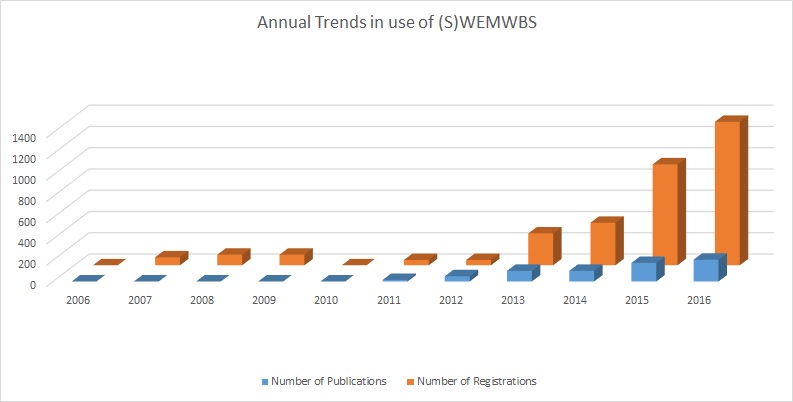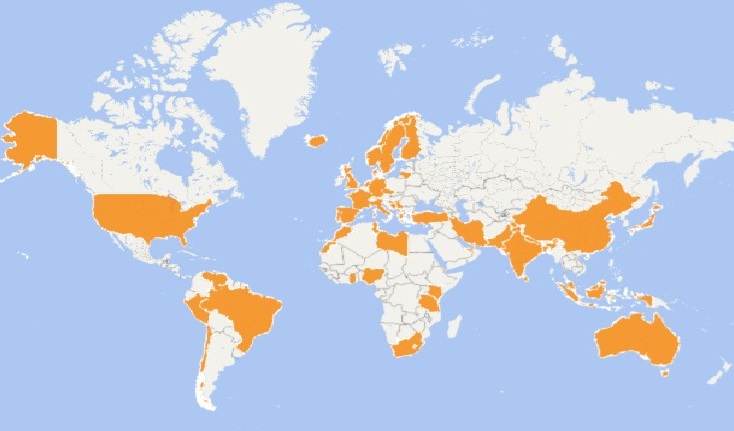How and where WEMWBS is used
“[We were] asking GPs […to] signpost them onto improving their resilience and wellbeing […] that wouldn’t have happened in my opinion if we hadn’t had the 7-item scale WEMWBS. The scales are no longer a distraction from work, they are an essential part of what we do.'' - General Practitioner
The 14-item scale WEMWBS and the 7-item scale SWEMWBS have been widely adopted as outcome measures for a variety of different projects, programmes and approaches with over 100 registrations for use a month. Many of these are in non-clinical settings and include:
- mental health education programmes e.g. mental health literacy, social and emotional learning or mindfulness, typically delivered in groups and often in educational settings
- programmes to promote wellbeing in the workplace including within business, public and third sector organisations
- evaluating interventions which aim to change health-related behaviour, offer arts for health, or aim to change the built and green environment
- evaluation of the effect of community projects and parenting programmes
- psychotherapeutic interventions, usually delivered in a clinical setting one on one.
- clinical settings within the NHS where patients are treated for both mental and physical illness
Healthcare is the most popular setting for use of (S)WEMWBS but it is also frequently used in education, community and voluntary sectors.
The 14-item scale WEWMBS and the 7-item scale SWEMWBS are being applied universally at the population level as well as with groups with special problems or issues (targeted use). The brevity and unidimensionality of the scales make them very suitable for both purposes and population-level data is valuable for interpreting the results of evaluations with targeted groups.
Research suggests that the dissemination of WEMWBS had occurred through a mix of bottom-up and top-down approaches by word of mouth and electronic searching. Both in clinical services and in community organisations, use of WEMWBS is often a pragmatic response to an external mandate to evaluate services. In some parts of the county, Wellbeing Champions have pushed for use of the measures to evaluate programmes and support performance management. The measures have been very helpful in strengthening business cases convincing decision-makers and securing funding.

Annual trends of WEMWBS.

Country of origin for WEMWBS licenses
